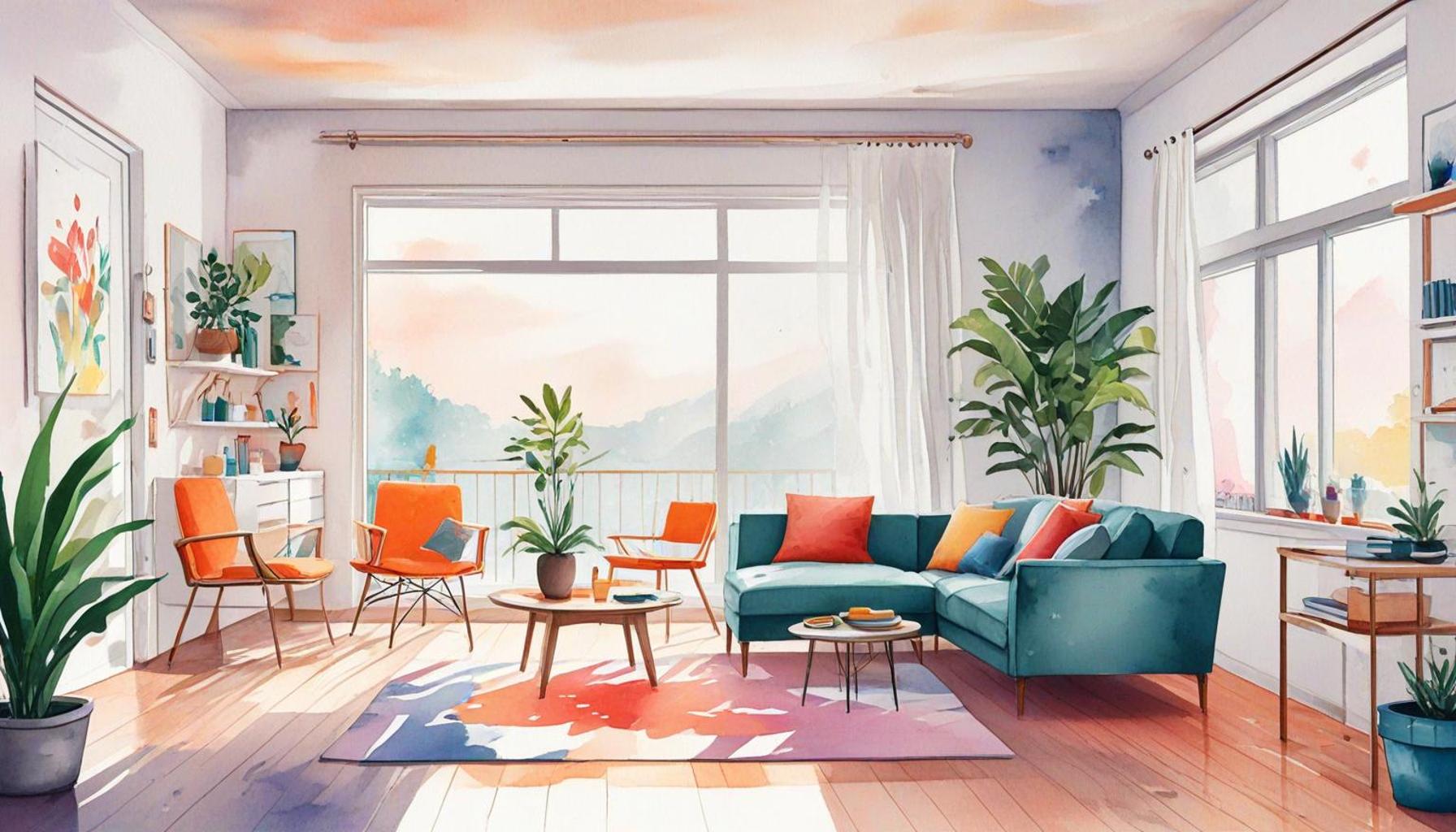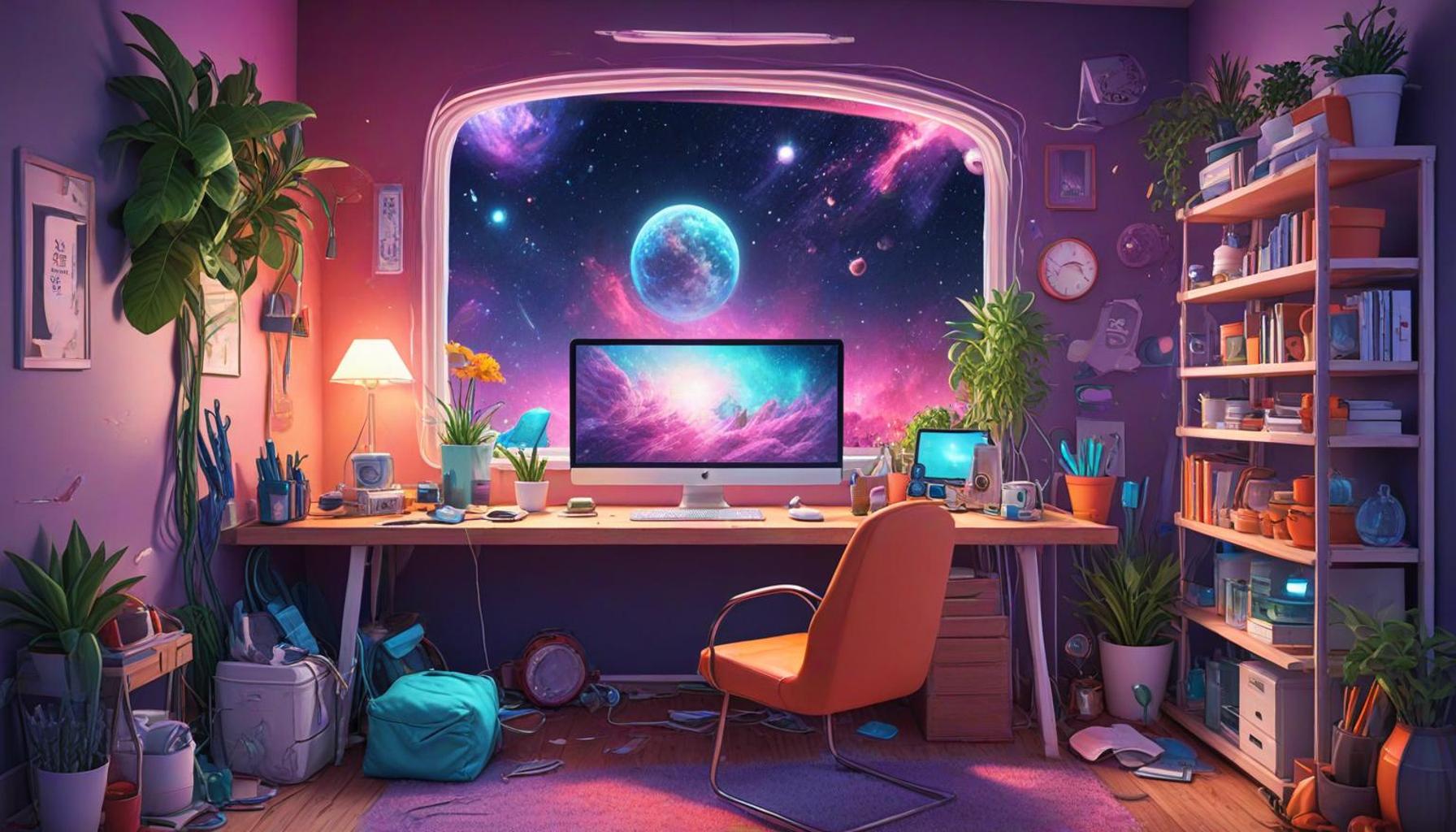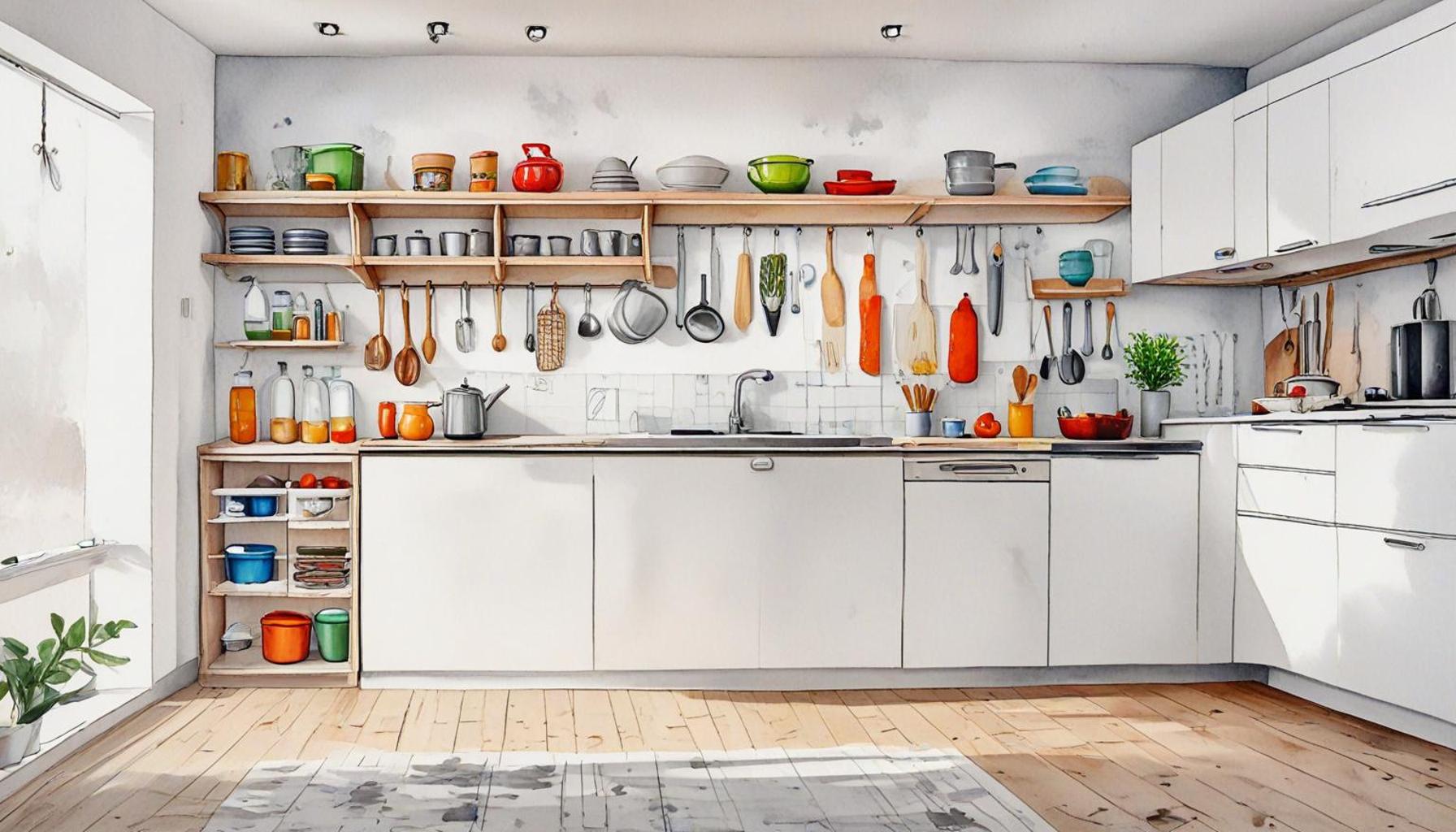The influence of minimalist culture on interior design projects that prioritize space optimization

Understanding the Essence of Minimalism in Interior Design
The concept of minimalism transcends mere aesthetic appeal; it embodies a lifestyle choice that prioritizes simplicity, functionality, and the maximization of available space. In an era where urban living is increasingly common, particularly in densely populated cities across the United States, the importance of creating optimized environments is paramount. Minimalism invites individuals to rethink their relationship with material possessions while cultivating serene and purposeful living spaces.
One of the most significant impacts of minimalist culture on interior design can be seen in the adoption of functional furniture. These are multi-purpose pieces that cater to various needs and uses. For example, a coffee table that doubles as a storage unit or a sofa bed that transforms into a guest bed illustrate how functionality is integrated into design. This approach not only saves space but also encourages a more deliberate selection of furnishings, promoting a lifestyle defined by intentionality.
In addition to functional furniture, the use of neutral color palettes plays a critical role in minimalist design. Soft hues such as whites, creams, and grays create a tranquil atmosphere that enhances the perception of spaciousness. This color scheme allows light to reflect, making small spaces appear larger and more open. For instance, many New York City apartments adopt light colors to combat the often dreary urban environment, making interiors feel both inviting and expansive.
The adage less is more resonates deeply in minimalist design philosophies. By focusing on fewer, well-chosen items, homeowners can foster a sense of openness while significantly reducing clutter. This not only enhances visual aesthetics but also contributes to mental clarity, as a tidy environment can promote a calm and centered mind. As a specific example, a well-designed San Francisco loft might feature just a handful of carefully selected art pieces, allowing each item to shine without overwhelming the senses.
In cities where space is a premium, the influence of minimalism becomes increasingly vital. Designers are often faced with the task of crafting living spaces that function as sanctuaries of serenity amid bustling surrounds. This leads to essential design elements, including:
- Open layouts that encourage fluid movement and accessibility, enabling residents to maximize the utility of limited square footage.
- Smart storage solutions cleverly tucked away within furniture, such as built-in shelving or under-bed drawers, enabling the seamless organization of belongings.
- Natural light optimization through strategic window placement and the use of sheer curtains, enhancing mood and defining space.
As we delve deeper into the intersection of minimalist culture and interior design, it becomes crucial to explore how our living spaces reflect our values. The minimalist approach not only meets practical needs but also promotes a lifestyle of peace and mindfulness—making the concept both compelling and universally relevant. By embracing minimalism, individuals can create environments that inspire clarity, creativity, and a harmonious connection to their surroundings.
LEARN MORE: Click here to discover how minimalism can enhance your time management
Navigating the Intersection of Minimalism and Functionality
The notion of space optimization in interior design has gained tremendous traction, especially among urban dwellers who grapple with limited square footage in cities like Los Angeles and Chicago. Minimalist culture has significantly shaped this trend, offering innovative solutions to the challenges posed by cramped living conditions. As interior designers embrace a philosophy centered around “less is more,” they redefine how we utilize and experience our living spaces.
One key component of this transformation is the integration of modular design elements. Modular furniture pieces provide versatility and adaptability, catering to diverse needs and preferences. For instance, modular sofas can be rearranged according to the occasion or mood, allowing residents to effortlessly transition from work-from-home setups to social gatherings. This ability to reconfigure spaces promotes dynamic living experiences while reducing the need for excessive furnishings. In densely populated areas, where every square foot matters, such designs are invaluable.
Another compelling aspect of minimalist-inspired interior design is the emphasis on natural materials. The use of wood, stone, and organic textiles fosters a deeper connection with the environment while maintaining a clean aesthetic. Incorporating these materials can introduce warmth into minimalist spaces, counteracting the potential starkness that might accompany an overly simplistic approach. A New York loft might feature reclaimed wood elements, such as exposed beams or accent walls, creating inviting focal points without compromising the minimalist ethos.
Moreover, the transition toward minimalism is facilitated by the advent of technology that supports smart living solutions. Home automation systems allow for the seamless integration of essential functions into minimalist designs. For example, smart lighting that can be controlled via an app can be adjusted to enhance the ambiance of a room, enriching the experience of simplicity without cluttering the space with multiple switches or fixtures. This melding of technology and design reflects a growing desire for streamlined, efficient living.
As we consider the principles of minimalist culture, it is essential to recognize the profound impact of strategic organization. Minimalist interiors prioritize decluttering, compelling individuals to evaluate their possessions critically. Techniques such as the “one in, one out” rule—where a new item is only brought in after eliminating an existing one—encourage residents to maintain a curated collection of essential belongings. This prioritization not only maximizes space but also cultivates a mindset geared toward mindfulness and intentional living.
In exploration of the relevance of these concepts, several design strategies emerge to enhance space optimization:
- Vertical storage solutions that utilize wall space effectively, such as floating shelves or hanging storage, minimize floor clutter while showcasing personal items.
- Furniture with built-in functionality, like extendable dining tables or nesting side tables, encourages adaptability in smaller spaces.
- Integrating outdoor spaces, such as balconies or yards with minimal landscaping, can enhance the perception of space and offer a retreat from urban life.
Ultimately, the influence of minimalist culture on interior design projects that prioritize space optimization embodies a harmonious relationship between aesthetics and functionality. Through thoughtful design choices, individuals are empowered to create inviting, serene environments that enrich daily life while supporting the principles of sustainability and mindfulness.
| Advantages | Impact on Design Projects |
|---|---|
| Space Efficiency | Minimalist culture encourages the maximization of space, leading to layouts that are uncluttered and functional. |
| Aesthetic Appeal | Designs that emphasize clean lines and simplicity create a calming atmosphere, enhancing mental well-being. |
| Sustainability | Minimalist interiors often utilize eco-friendly materials and adaptive reuse of spaces, promoting sustainability. |
| Timelessness | Simple, yet sophisticated styles resist trends, ensuring long-lasting design and relevance over time. |
The minimalist philosophy in interior design doesn’t just represent a trend; it embodies a profound approach to living sustainably and efficiently. By prioritizing space optimization, designers are encouraged to think critically about the function of each element in the design. This transforms not only the physical space but also the lifestyle of those who inhabit it. For instance, open floor plans often champion this ethos by removing unnecessary walls to create a seamless flow, making spaces appear larger and more inviting.Moreover, this minimalist approach can lead to significant cost savings in both construction and maintenance. Because space is used wisely, the need for excessive furnishings and decor is reduced. Homeowners and designers alike are increasingly recognizing that less can indeed be more. As minimalist design continues to gain traction, its influence on the way we perceive and utilize living spaces will undoubtedly shape the future of interior design projects at large.
DIVE DEEPER: Click here to uncover the secrets of intentional living
The Art of Minimalist Layouts
Exploring space optimization through the lens of minimalist culture reveals a profound shift in interior design projects, particularly regarding layout and spatial arrangement. The concept of open floor plans has surged in popularity, melding the kitchen, living, and dining areas into a cohesive space that feels airy and expansive. This design choice not only enhances sightlines but also invites natural light to flow through, creating an inviting atmosphere that champions openness over confinement. Such layouts are especially favored in New York City apartments, where a seamless integration of areas can make even the most petite spaces feel more substantial.
Moreover, the minimalist philosophy encourages the use of negative space, which refers to the areas around and between objects. By deliberately incorporating negative space into designs, interior designers cultivate a sense of calm and tranquility, which is often lost in overly cluttered environments. A well-placed piece of furniture, such as a sleek armchair or an elegant lamp, can stand out amid negative space, attracting attention and creating a focal point without overwhelming the viewer. This technique has gained traction in contemporary homes across the United States where individuals increasingly seek solace from their bustling surroundings.
Another critical element in minimalist design is the concept of flexible spaces. Interior designers are crafting versatile environments that can efficiently serve multiple purposes. For instance, a guest room may double as a home office, with a wall-mounted desk that folds away when not in use. This adaptability makes the most of limited square footage while embodying the essence of minimalist culture, which advocates for multifunctional designs. Emerging trends in flexible furniture, like convertible beds or pull-out tables, cater to families in smaller homes, offering solutions that align with lifestyle changes.
- Color palette choices also significantly impact space optimization. Minimalist design leans heavily toward neutral tones that create visual harmony and expand the perception of a room’s dimensions. Shades of white, gray, and beige become a canvas onto which bold accent pieces can be introduced, allowing personal expression without straying from the tranquil aesthetic.
- Lighting design, another cornerstone of minimalist interiors, plays a crucial role in enhancing feeling of space. Natural light is prioritized through large windows or skylights in design projects, complemented by understated fixtures like recessed or pendant lighting. The thoughtful placement of light sources can dramatically alter how a room feels, imbuing it with warmth while maintaining a clean look.
- Incorporating greenery into minimalist spaces is becoming increasingly popular, adding both color and life to interiors. Plants, particularly those that require minimal maintenance like succulents or snake plants, serve as aesthetically pleasing decor elements that don’t overcrowd spaces and promote a healthy atmosphere.
Furthermore, the movement towards a sustainable lifestyle aligns seamlessly with minimalist principles, leading to a greater emphasis on sourcing products that are not just functional but also eco-friendly. Designers are opting for sustainable materials and sourcing locally produced furniture, reducing the carbon footprint associated with transportation and promoting conscientious consumerism. This approach resonates with a growing number of homeowners in the U.S. who are prioritizing environmental responsibility in their design choices.
In summary, the marriage of minimalist culture and space optimization in interior design creates an appealing paradox: it champions simplicity while celebrating functionality. By focusing on layout, negative space, flexible designs, and ecological consciousness, modern interiors not only respond to the constraints of urban living but also invite an enhanced quality of life for their inhabitants.
DISCOVER MORE: Click here to enhance your productivity
Embracing Minimalism for a Sustainable Future
As we dive deeper into the impact of minimalist culture on interior design projects that prioritize space optimization, it becomes evident that this approach resonates far beyond aesthetic appeal. The emphasis on simplicity, functionality, and sustainability aligns seamlessly with the shifting values of contemporary homeowners in the United States. With urban living conditions leading many to grapple with limited space, the adoption of minimalist principles proves not only practical but transformative.
By championing elements like open layouts, negative space, and flexible designs, minimalist interiors promote an efficient use of space, creating an environment that feels larger and more inviting. This intentional arrangement encourages mindfulness and tranquility, allowing residents to find peace amid the chaos of daily life. Moreover, the burgeoning trend toward sustainable practices, including the use of eco-friendly materials and locally sourced furnishings, underscores the broader social responsibility inherent in modern minimalist design.
Ultimately, the integration of minimalist culture into interior design is more than a passing trend; it reflects a deeper yearning for balance and clarity in our living environments. As we continue to navigate an era defined by rapid change, embracing these principles will not only enhance our spaces but also foster a greater sense of well-being. For those looking to revamp their homes or embark on new design projects, the minimalist approach offers an enticing pathway towards creating harmonious and functional living spaces, tailored to support today’s dynamic lifestyle.


